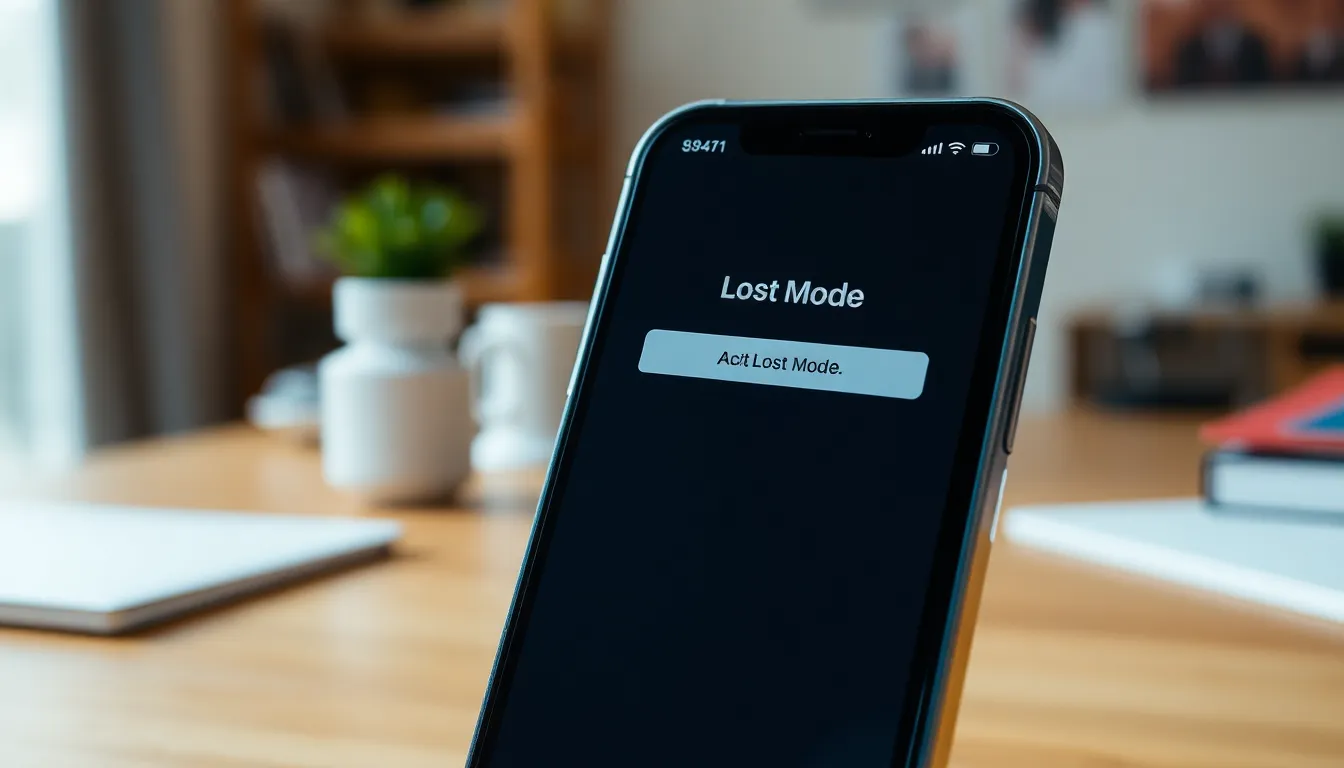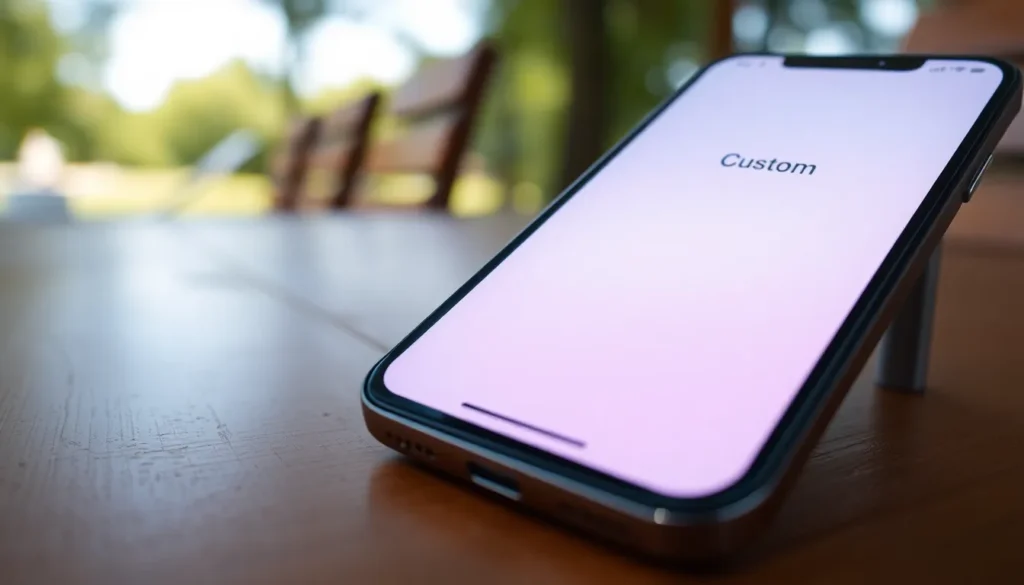Table of Contents
ToggleLosing an iPhone can feel like losing a limb, right? Panic sets in as thoughts of all those cat memes and embarrassing selfies flood the mind. But fear not! Apple’s Lost Mode swoops in like a superhero, ready to save the day. It’s not just a fancy name; it’s a powerful tool that can lock your device and keep your data safe from nosy neighbors and wandering eyes.
But does Lost Mode really lock your iPhone? Absolutely! When activated, it transforms your device into a digital fortress. It locks the screen and displays a custom message, making it clear that this phone is off-limits. So, if you’ve ever wondered how to keep your precious device secure while it’s on an unexpected adventure, you’re in the right place. Let’s dive into how Lost Mode works and why it’s your iPhone’s best friend in times of distress.
Overview of Lost Mode
Lost Mode is a feature designed to enhance the security of an iPhone when it goes missing. Activating Lost Mode locks the device, preventing unauthorized access to personal information. A user can display a custom message on the screen, which often includes contact details to help others return the phone.
When Lost Mode is enabled, the device tracks its location using GPS. This allows the owner to obtain real-time updates on its whereabouts. Notifications alert the user if the iPhone is located or if it connects to a trusted Wi-Fi network.
Lost Mode also disables features such as Apple Pay to further protect sensitive data during a loss. Users can activate this feature through the Find My app or iCloud website. With just a few taps, they can secure their device within moments.
By using the Lost Mode feature, the likelihood of recovery increases significantly. It serves as a safety net against potential identity theft or data breaches. The combination of screen locking, location tracking, and message display makes this feature essential for iPhone users concerned about security.
Technological advancements enhance Lost Mode’s effectiveness. Apple continuously updates security protocols, offering users peace of mind when their devices go missing. By understanding and utilizing Lost Mode, individuals can take proactive steps to protect their valuable information.
How Lost Mode Works

Lost Mode is a crucial feature in Apple’s device protection landscape. It locks an iPhone, effectively safeguarding personal information against unauthorized access.
Activation Process
Activating Lost Mode involves a few simple steps. Users can open the Find My app or log into the iCloud website. Once signed in, they select their device and choose “Lost Mode.” A prompt appears for users to enter a custom message with contact information. Activation occurs instantly, locking the device and enabling location tracking. This swift process significantly increases the chances of recovering a lost iPhone quickly.
Impact on Device Features
Enabling Lost Mode alters several device functionalities. It locks the iPhone’s screen, preventing access to apps and information. Apple Pay becomes disabled, enhancing financial security. Notification sounds are silenced, reducing the chance of attracting attention. Location tracking activates, providing real-time updates whenever the device connects to a trusted Wi-Fi network. By modifying these features, Lost Mode effectively protects users’ data and assists in recovery efforts.
Security Benefits of Lost Mode
Lost Mode provides significant security advantages for iPhone users, ensuring their personal data remains protected in case of loss.
Locking the iPhone
Activating Lost Mode immediately locks the iPhone’s screen. As a result, unauthorized users can’t access the device. The lock serves as a barrier against potential data breaches. Users remain in control; they can display a custom message with contact details for return facilitation. This feature not only protects information but also encourages goodwill from anyone who finds the phone.
Preventing Unauthorized Access
Lost Mode effectively prevents unauthorized access to sensitive data on the device. When activated, crucial features like Apple Pay get disabled, further ensuring personal information stays secure. Lost Mode encrypts stored data, making it inaccessible without the decryption key. This enhanced security measures decrease the likelihood of identity theft, allowing users to feel confident that their private information is safe even if their iPhone goes missing.
Limitations of Lost Mode
Lost Mode offers significant protection but does come with limitations. Understanding these limitations can clarify expectations and enhance the device recovery experience.
Misconceptions About Functionality
Many people think Lost Mode provides complete protection from all unauthorized access. It’s important to know it locks the screen but doesn’t erase data. Users may assume that Lost Mode guarantees recovery of their device; however, it relies heavily on finding help from others or having the device online. Users cannot access the device’s data after enabling Lost Mode, which might lead to frustration when searching for a solution. The feature does not automatically back up location information in offline situations, causing delays in tracking. Misunderstandings of these functionalities could lead to unrealistic expectations for device recovery.
Scenarios Where It May Not Be Effective
Certain scenarios limit the effectiveness of Lost Mode. If the device is powered off or loses internet connectivity, tracking accuracy becomes compromised. Areas with weak Wi-Fi signals or no cellular data can further hinder device location updates. Users should also consider that if someone hard resets the iPhone, Lost Mode deactivation occurs, making the device accessible again. Additionally, if the device isn’t registered with Apple ID or Find My iPhone is not enabled prior to loss, Lost Mode won’t initiate. Each of these factors may significantly impact the chances of successfully recovering a lost device.
Lost Mode is an essential feature for anyone concerned about the safety of their iPhone. By locking the device and protecting personal data it offers peace of mind during a stressful time. The ability to display a custom message and track the device’s location enhances the chances of recovery significantly.
While it provides substantial security benefits it’s important to recognize its limitations. Users should understand that Lost Mode doesn’t erase data and can be circumvented under certain conditions. By being aware of these factors users can better navigate the challenges of losing their device and utilize Lost Mode effectively to safeguard their information.




